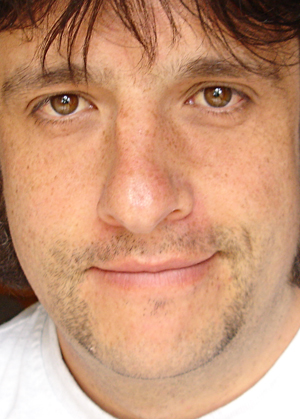There is a long (and proud, apparently) tradition of using our 50 cent coins in Australia to celebrate various significant events (uh - like the marriage of Prince Charles and Lady Diana) - mainly because it's our largest coin and being twelve sided (a dodecagon, if you were wondering) I guess it's not distinctive enough already.
(Click on the image for a full size view)

At first I thought it was a nice (if not slightly random) collage of sporting images mixed up with images of native fauna - only after a bit of looking did I realise that it actually represents traditional Victorian events revived for the games.
Obviously, there is our most proud tradition, the bird whipping event. It is an event based on free expression and with roots to the earliest days of European occupation of this country - originating in farmer frustration with drought. Points are given for speed and accuracy but primarily for "making the whip sing".
This shouldn't be confused with a similar event - the bird teasing event. A gentler event in many ways, this consists of tying a small piece of bread to the end of a piece of string at the end of a stick and using it to lure a bird to walk around the "teaser" in delicate patterns. Points again for speed, time before the bird gets bored and flies away and how high up you can make the bird stretch.
(To be honest, I'm not entirely sure which of these two events is depicted on the coin so I thought I should cover both)
Directly above this is the "Chase an emu while walking like an Egyptian) event. This is relatively new sporting event in Australia, designed to celebrate a proud tradition of multiculturalism in Victoria and acknowledge our indigenous history. (It serves a secondary purpose of winding up Howardists in the federal government how want to abolish multiculturalism and wish that Aborigines would just go away).
To the right of this is a complicated event - the "Frog pretend". You will notice that it is the job of the athlete at the top to put themselves in a position judged by a panel of frog scientists to be the most similar to a frog hanging onto a stick. The origins of this sport are shrouded in mystery and it is assumed, clouds of smoke.
Below this is a depiction of basic kangaroo safety. If you are sitting and sense that a kangaroo is jumping on you from the sky, assume the crash position by leaning forwards and resting your arms on the seat in front of you.
Finally, we come to the swimming event. This is essentially the same as competitive swimming around the world but in Australia, we add an element of nature to the programme by having each swimmer compete with a platypus. Games and world record times are only validated if the swimmer is also able to best the platypus - only fair considering that humans are much larger than them.
Curiously, there is as yet no information about any of these sports to be found on Wikipedia (or even Conservapedia). This is disappointing but perhaps just serves to highlight how truly unique these events are to Melbourne.
Another distinctly Australian quality to the games is that (particularly in the Frog pretend and Chase an Emu events) some of the athletes portrayed are actually doing a fairly mediocre job of it. Heroic failure is a cornerstone of Australian history (Burke and Wills, Gallipoli) and something celebrated to this day. (Australian Idol)


